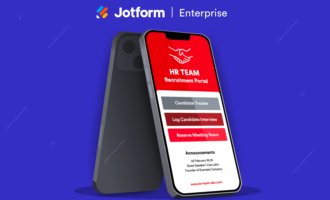As your organization grows, completing even the simplest tasks can get more complicated. If you’re getting to the point where different departments are following different workflows and stakeholders are confused about who’s in charge of what, then you need to implement an enterprise workflow management solution.
Here’s everything you need to know to get started.
What is enterprise workflow management?
Enterprise workflow management identifies, organizes, and improves a set of specific processes in an enterprise setting.
Workflows can be simple or complex; they can include just one department or several. By mapping out the way work is structured within your organization, identifying bottlenecks, and highlighting inefficient or redundant tasks, you can streamline and automate processes that would otherwise consume a lot of time and effort.
An enterprise workflow management system allows organizations to build and control automated, repeatable processes, typically by using software as a service (SaaS) products.
How can enterprise workflow management help your business?
Given the benefits that result from optimizing processes, enterprise workflow management is well worth the investment.
One of the biggest advantages of workflow management is the way it enhances the productivity of your organization. By automating non–revenue-generating and time-consuming tasks, you give your employees the freedom to focus on more creative, important work.
Holly Muscolino, research vice president of content technologies and document workflow at IDC, writes that “fundamentally transforming these workflows can lead to a more than 30 percent reduction in time spent on document-intensive processes, a 30–40 percent reduction in errors, and a 25–30 percent increase in productivity, depending on the specific functional area and process.”
Enterprise workflow management can also help increase transparency and accountability by building clear and traceable processes. This can improve compliance with regulations if software automatically adheres to legal requirements and best practices.
How can you improve your enterprise workflow management?
Now that you understand the benefits of enterprise workflow management, you probably want to get started as quickly as possible. Here are four tips to help you do it well.
Break down your existing processes
The first step to establishing an enterprise workflow management system is to identify your existing work processes. Highlight what your organization needs to accomplish, who needs to handle each task, and when they need to do it in order to meet goals. There will likely be many workflows you want to optimize, so start with the most important or least efficient first.
Find the holes
Every workflow is bound to have at least one inefficiency or wasteful task that you can streamline or eliminate. Find and fix these before going any further. Make sure you speak to everyone involved with the process to fully understand it and see where employees are having the most difficulty.
Define roles
Once you’ve eliminated the waste and made workflows more efficient, define who’s responsible for each subtask throughout the entire process. Even if you plan on automating much of the workflow, one person or department should still be responsible for owning each stage.
Use software to automate
Enterprise workflow management is most effective when you use software to automate as much of each process as possible. You can use Jotform to improve the efficiency of almost any enterprise workflow.
Jotform’s online form templates that instantly populate responses in a customizable Jotform table can help you automate data collection tasks. What’s more, you can streamline the entire approval process for a task with Jotform Approvals.
The platform’s no-code nature means anyone can set up forms, databases, or approval workflows in a matter of minutes. With over 100 integrations, it plays nicely with other tools, too, and you can build custom apps using the Jotform API.
There’s no need to worry about security, either. All Jotform data is protected with 256-bit SSL encryption and all payment transactions meet PCI DSS Level I standards. With Jotform’s Enterprise plan, data is stored on dedicated servers, you can also request to be provisioned in a SOC 2 Type II- and HIPAA-certified environment. Find out more about Jotform Enterprise today.
Photo by Tima Miroshnichenko























Send Comment: